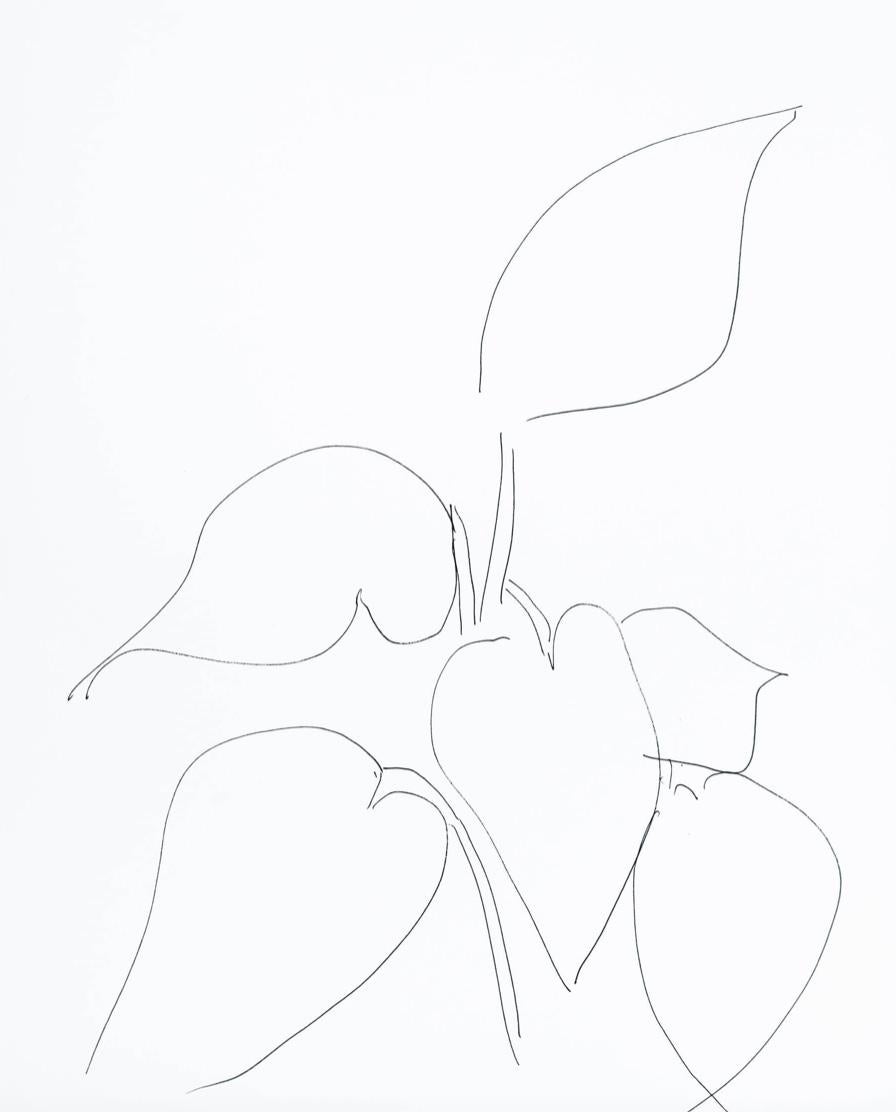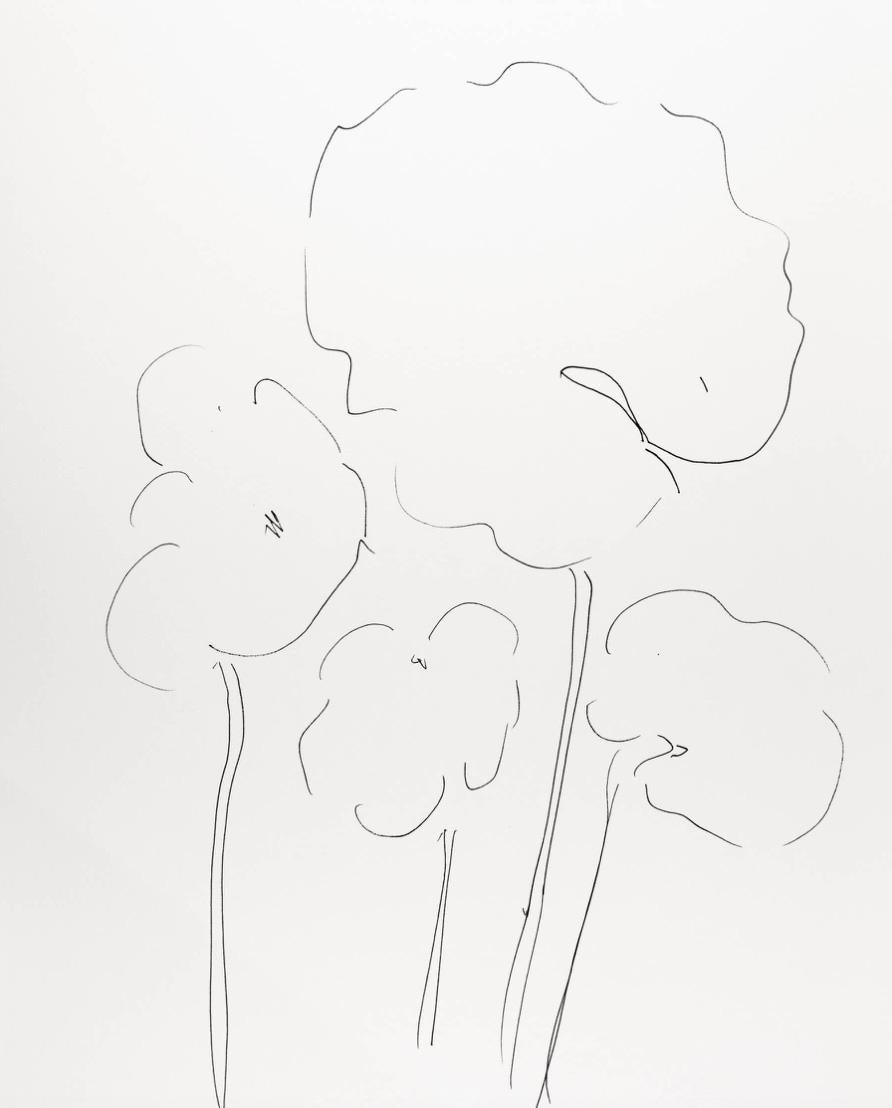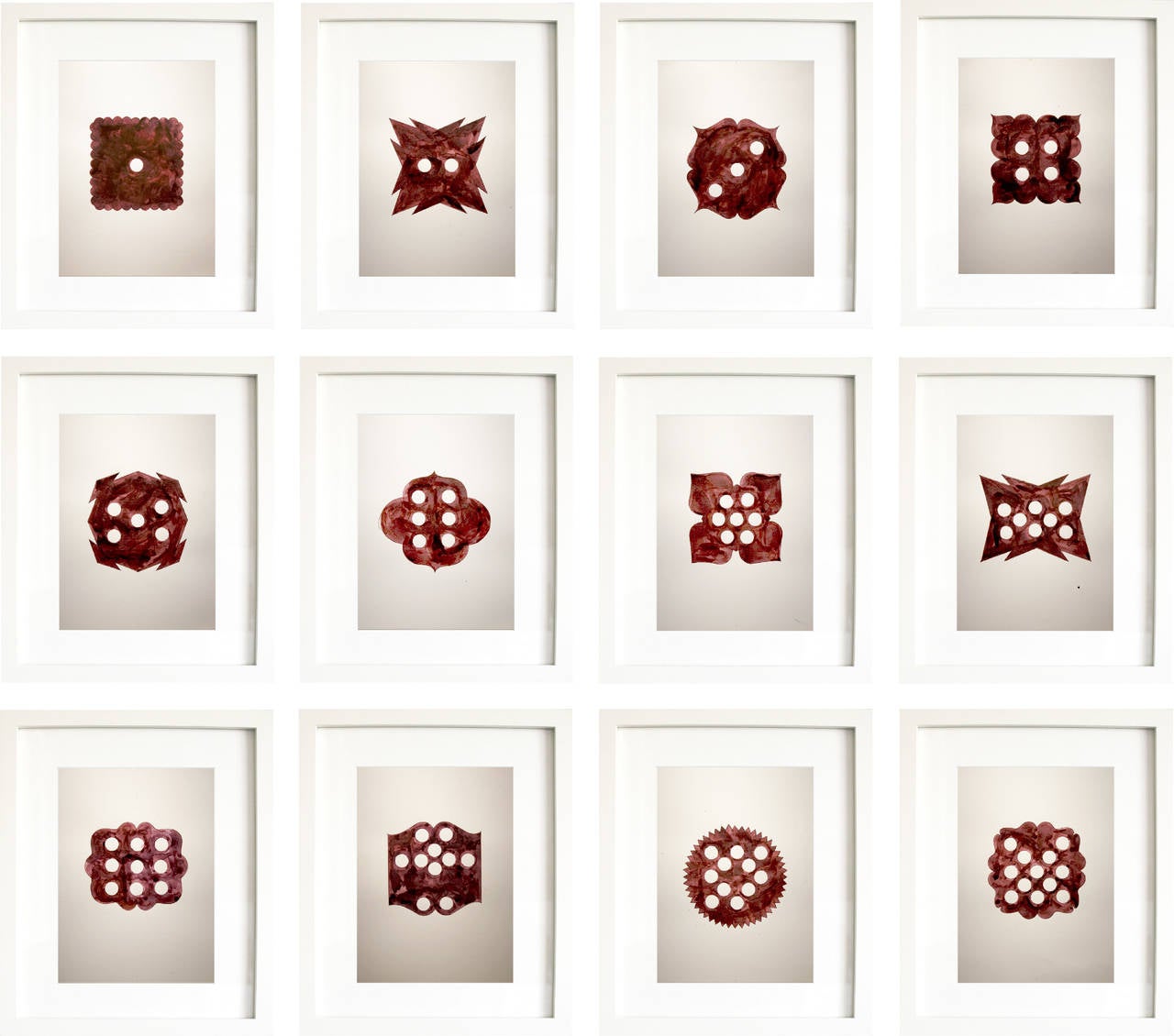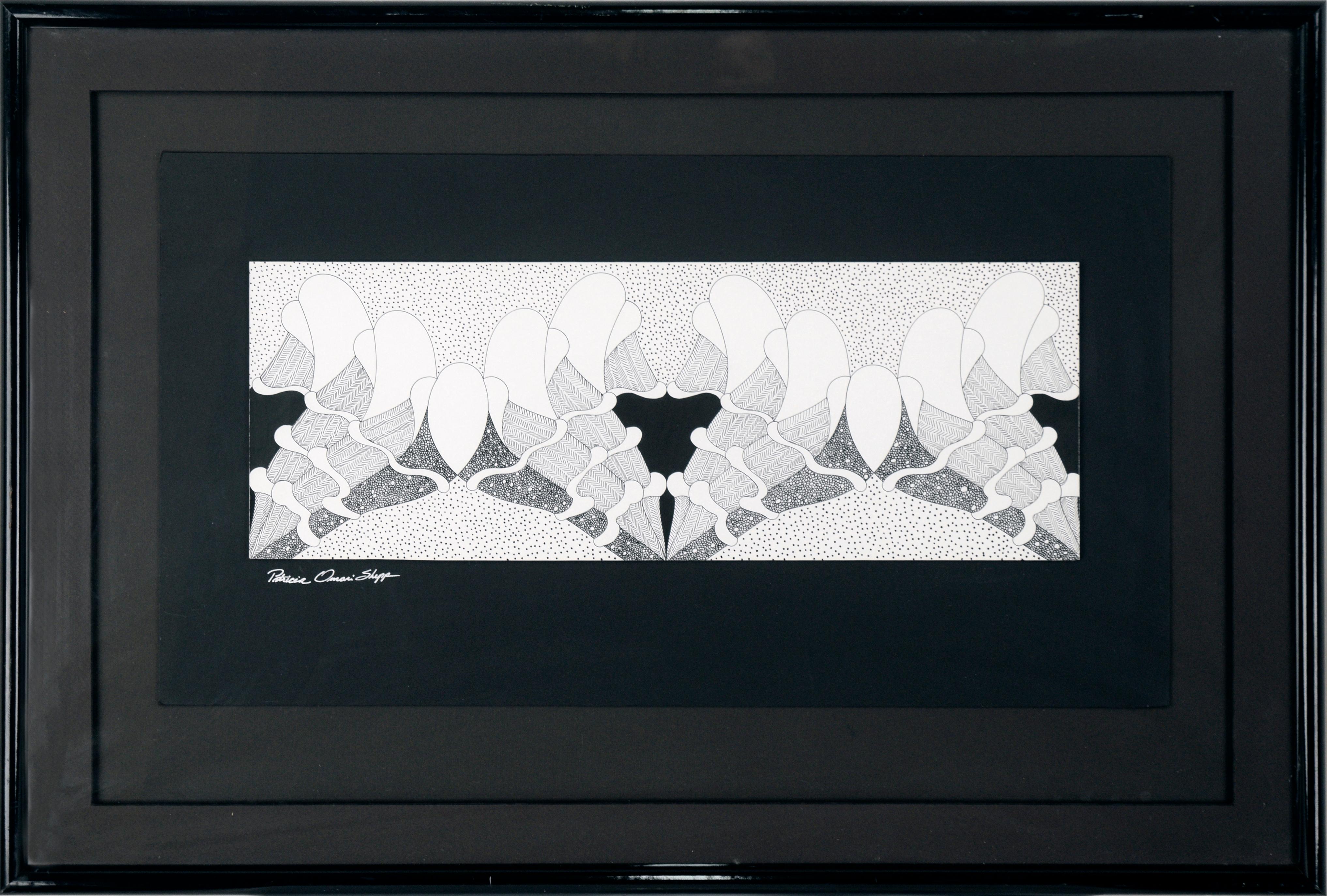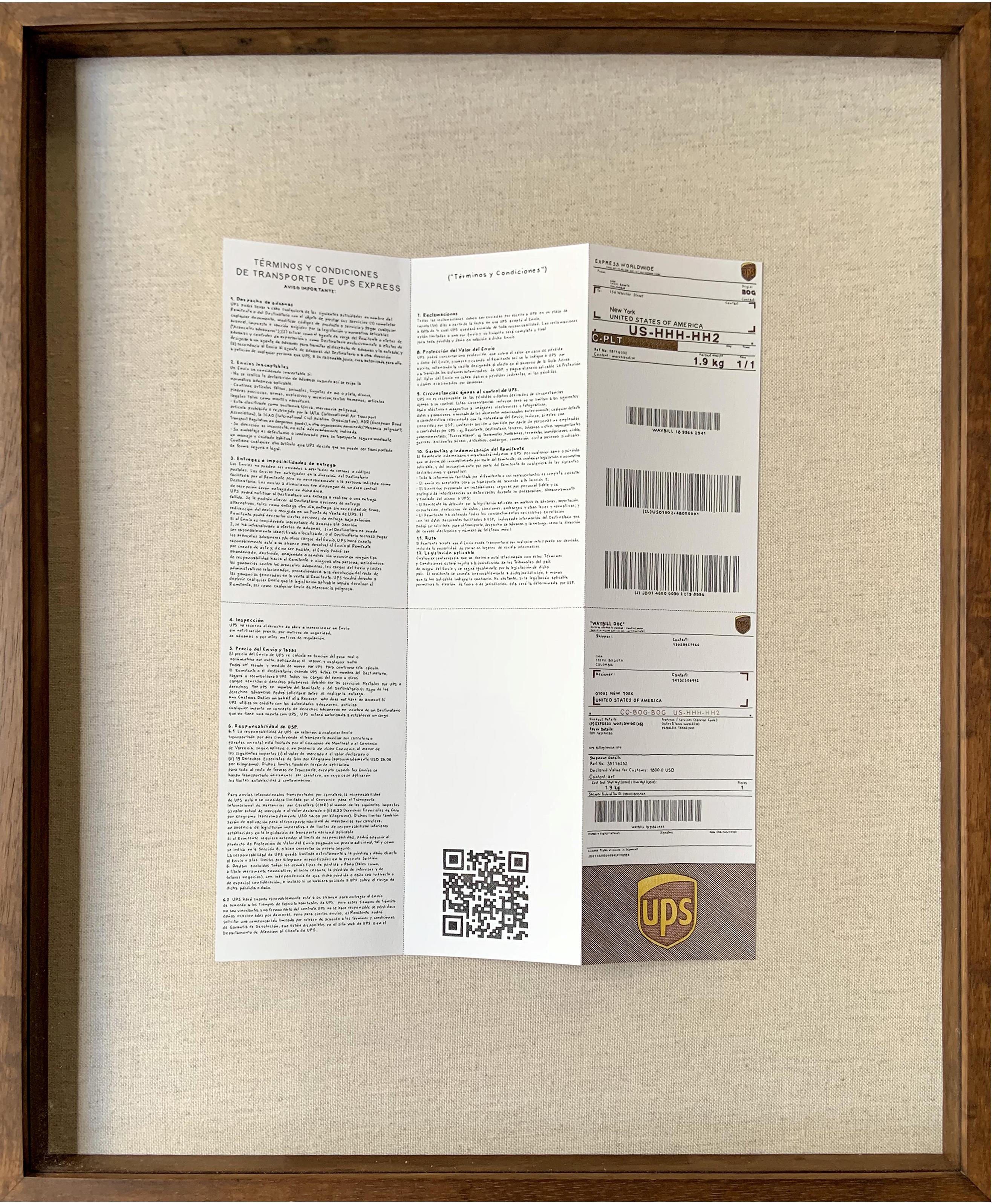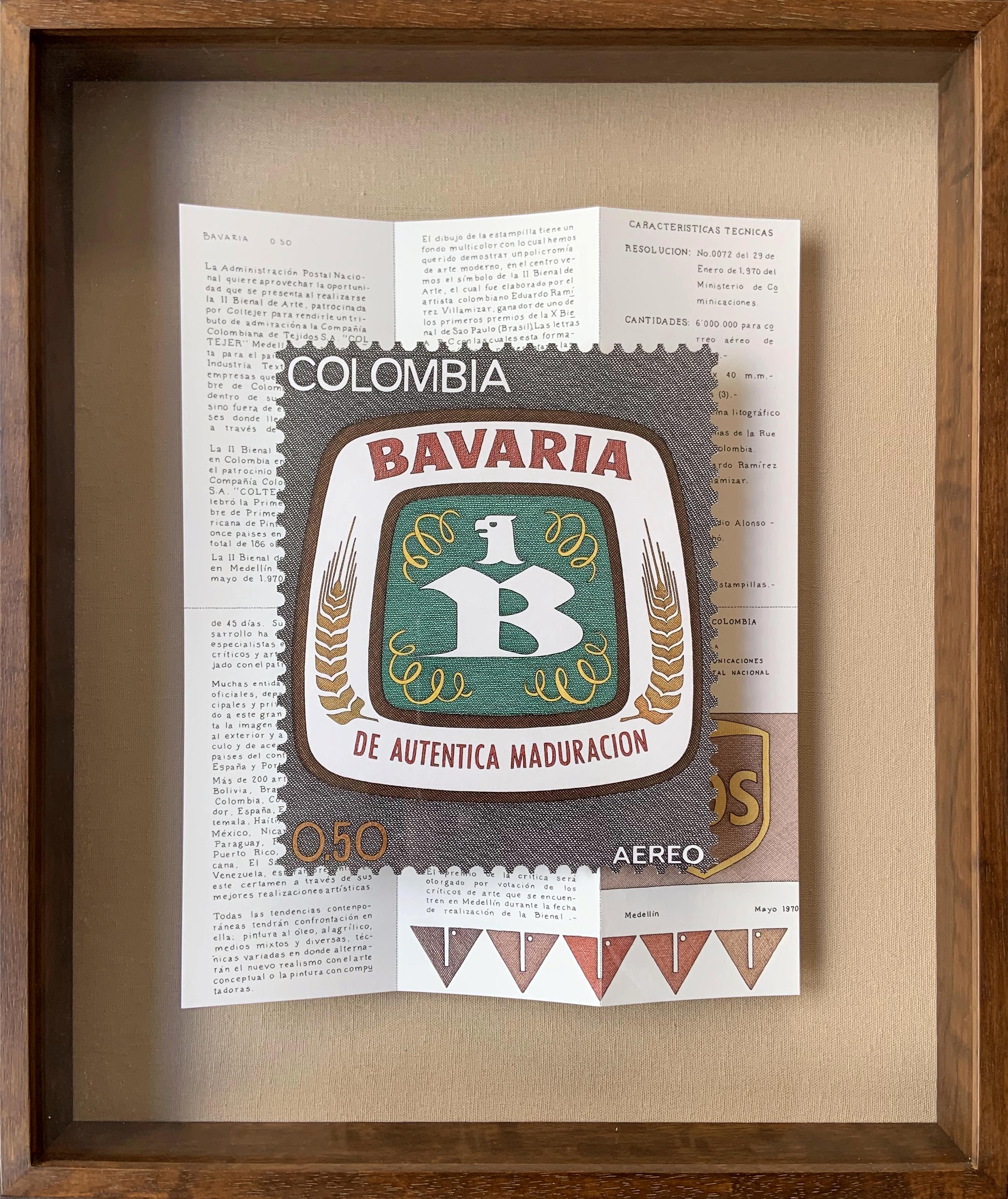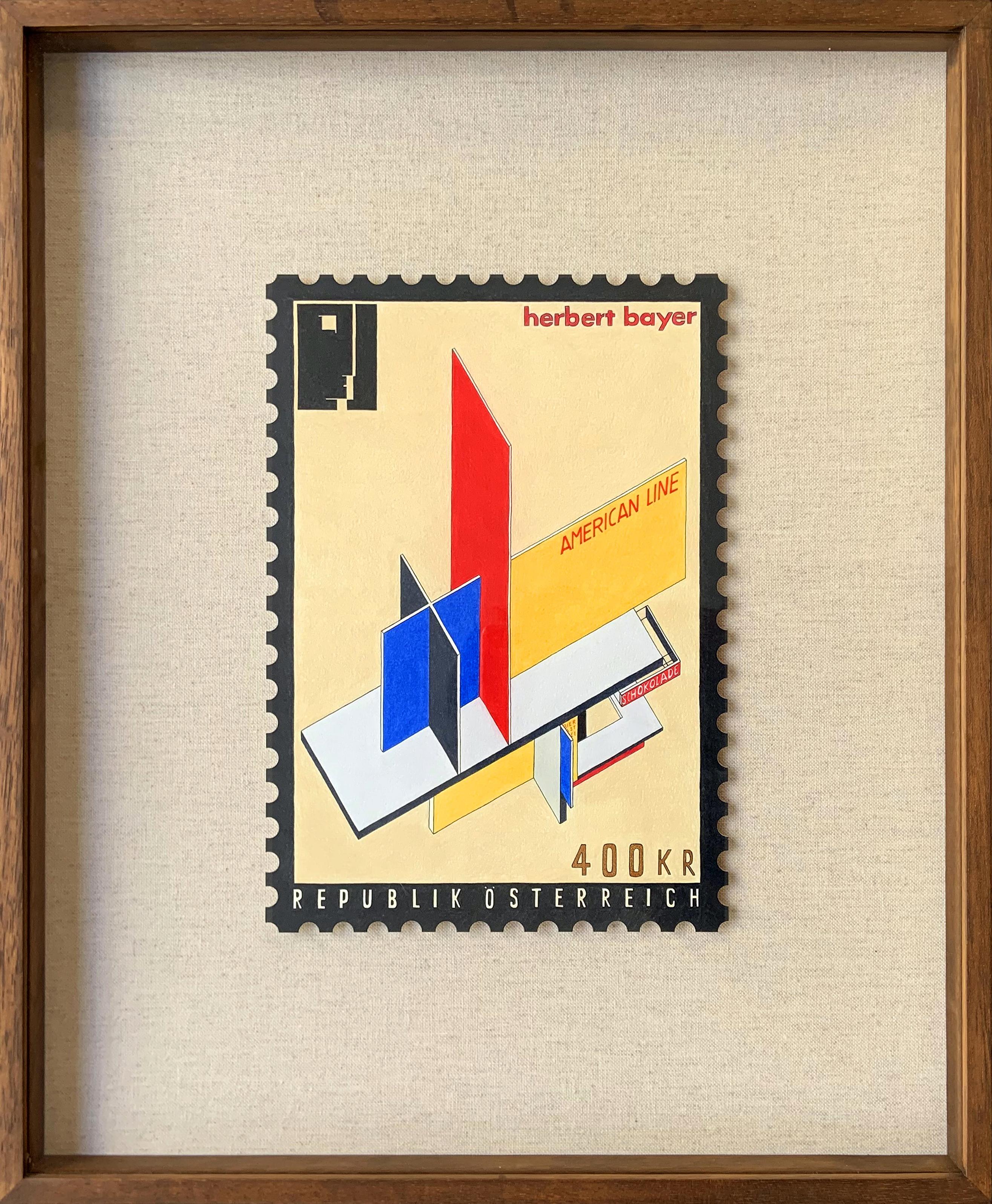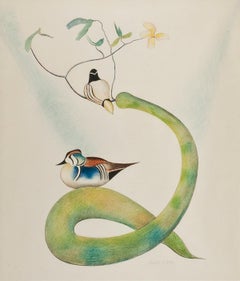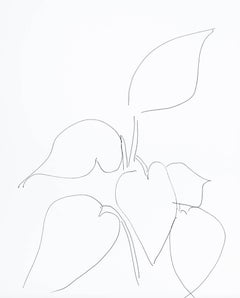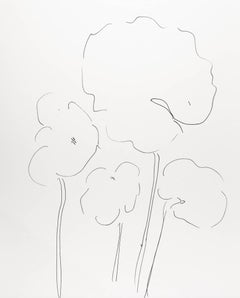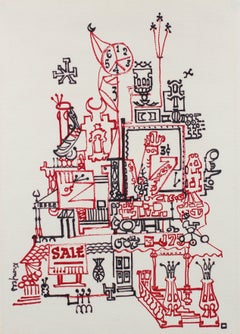
Architectural Fantasy Drawing in Red and Black Marker, Circa 1960s
View Similar Items
1 of 5
Morris KronfeldArchitectural Fantasy Drawing in Red and Black Marker, Circa 1960sCirca 1960s
Circa 1960s
About the Item
- Creator:Morris Kronfeld (1914 - 2011, American)
- Creation Year:Circa 1960s
- Dimensions:Height: 19.5 in (49.53 cm)Width: 14.25 in (36.2 cm)Depth: 0.07 in (1.78 mm)
- Medium:
- Movement & Style:
- Period:
- Condition:Minor wear.
- Gallery Location:San Francisco, CA
- Reference Number:Seller: 995431stDibs: LU29822794363
You May Also Like
- Two Wood Ducks on a Flowering BranchBy Joseph StellaLocated in New York, NYJoseph Stella was a visionary artist who painted what he saw, an idiosyncratic and individual experience of his time and place. Stella arrived in New York in 1896, part of a wave of Italian immigrants from poverty-stricken Southern Italy. But Stella was not a child of poverty. His father was a notary and respected citizen in Muro Locano, a small town in the southern Appenines. The five Stella brothers were all properly educated in Naples. Stella’s older brother, Antonio, was the first of the family to come to America. Antonio Stella trained as a physician in Italy, and was a successful and respected doctor in the Italian community centered in Greenwich Village. He sponsored and supported his younger brother, Joseph, first sending him to medical school in New York, then to study pharmacology, and then sustaining him through the early days of his artistic career. Antonio Stella specialized in the treatment of tuberculosis and was active in social reform circles. His connections were instrumental in Joseph Stella’s early commissions for illustrations in reform journals. Joseph Stella, from the beginning, was an outsider. He was of the Italian-American community, but did not share its overwhelming poverty and general lack of education. He went back to Italy on several occasions, but was no longer an Italian. His art incorporated many influences. At various times his work echoed the concerns and techniques of the so-called Ashcan School, of New York Dada, of Futurism and, of Cubism, among others. These are all legitimate influences, but Stella never totally committed himself to any group. He was a convivial, but ultimately solitary figure, with a lifelong mistrust of any authority external to his own personal mandate. He was in Europe during the time that Alfred Stieglitz established his 291 Gallery. When Stella returned he joined the international coterie of artists who gathered at the West Side apartment of the art patron Conrad Arensberg. It was here that Stella became close friends with Marcel Duchamp. Stella was nineteen when he arrived in America and studied in the early years of the century at the Art Students League, and with William Merritt Chase, under whose tutelage he received rigorous training as a draftsman. His love of line, and his mastery of its techniques, is apparent early in his career in the illustrations he made for various social reform journals. Stella, whose later work as a colorist is breathtakingly lush, never felt obliged to choose between line and color. He drew throughout his career, and unlike other modernists, whose work evolved inexorably to more and more abstract form, Stella freely reverted to earlier realist modes of representation whenever it suited him. This was because, in fact, his “realist” work was not “true to nature,” but true to Stella’s own unique interpretation. Stella began to draw flowers, vegetables, butterflies, and birds in 1919, after he had finished the Brooklyn Bridge series of paintings, which are probably his best-known works. These drawings of flora and fauna were initially coincidental with his fantastical, nostalgic and spiritual vision of his native Italy which he called Tree of My Life (Mr. and Mrs. Barney A. Ebsworth Foundation and Windsor, Inc., St. Louis, illus. in Barbara Haskell, Joseph Stella, exh. cat. [New York: Whitney Museum of American Art, 1994], p. 111 no. 133). Two Wood Ducks...Category
20th Century American Modern Still-life Drawings and Watercolors
MaterialsColor Pencil
- Plant 131Located in Westport, CT"My life as a painter began in the late 1950s when abstraction was “The only game in town”. I followed and progressed through gesture, organic and finally, geometric non-objective painting. The radical move for me was to discover that the real world of landscape lurked behind all that past work. My childhood in the mountains of Pennsylvania pervaded my “way of seeing” and I wanted to investigate and celebrate the infinite variety of tone, color and composition that I found around me. Sky, the structure of trees, mist and water appeared to fill a hunger to look again and again. There was mystery and danger lurking behind the beauty, and my aim was to try to avoid the cliché and explore the infinite structure of the visual landscape. Now I use my camera as a sketchbook and search for images that seem to offer odd structure and “mystery”. I shoot multiple points of view, cull, crop, and mostly discard. The surviving photographs become the catalyst for the paintings and the process is always a mediation between memory and the small image pinned to my easel...Category
2010s Contemporary Abstract Drawings and Watercolors
MaterialsPaper, Ink
$1,000 - Plant 133Located in Westport, CT"My life as a painter began in the late 1950s when abstraction was “The only game in town”. I followed and progressed through gesture, organic and finally, geometric non-objective painting. The radical move for me was to discover that the real world of landscape lurked behind all that past work. My childhood in the mountains of Pennsylvania pervaded my “way of seeing” and I wanted to investigate and celebrate the infinite variety of tone, color and composition that I found around me. Sky, the structure of trees, mist and water appeared to fill a hunger to look again and again. There was mystery and danger lurking behind the beauty, and my aim was to try to avoid the cliché and explore the infinite structure of the visual landscape. Now I use my camera as a sketchbook and search for images that seem to offer odd structure and “mystery”. I shoot multiple points of view, cull, crop, and mostly discard. The surviving photographs become the catalyst for the paintings and the process is always a mediation between memory and the small image pinned to my easel...Category
2010s Contemporary Still-life Drawings and Watercolors
MaterialsInk, Paper
$1,000 - Plant 87Located in Westport, CT"My life as a painter began in the late 1950s when abstraction was “The only game in town”. I followed and progressed through gesture, organic and finally, geometric non-objective pa...Category
2010s Contemporary Abstract Drawings and Watercolors
MaterialsPaper, Ink
$1,000 - 'The Holy Grail', Last Supper, Egyptian Iconography, Seattle Art Museum, SurrealBy Leo KenneyLocated in Santa Cruz, CASigned lower center, 'Leo Kenney' (American, 1925-2001) and dated 1947. A seminal figure in the second generation of Northwest School artists, Leo Kenney was, like many of his conte...Category
1940s Surrealist Still-life Drawings and Watercolors
MaterialsPaper, India Ink, Watercolor
- Hereldic Symbols 1-10By Michael Ricardo AndreevLocated in New York, NYHereldic Symbols 1-10 Andreev’s paintings and installations draw the viewer into post-revolutionary landscapes containing unidentified flying objects su...Category
21st Century and Contemporary Contemporary Abstract Drawings and Waterco...
MaterialsArchival Ink, Archival Paper
Price Upon Request

